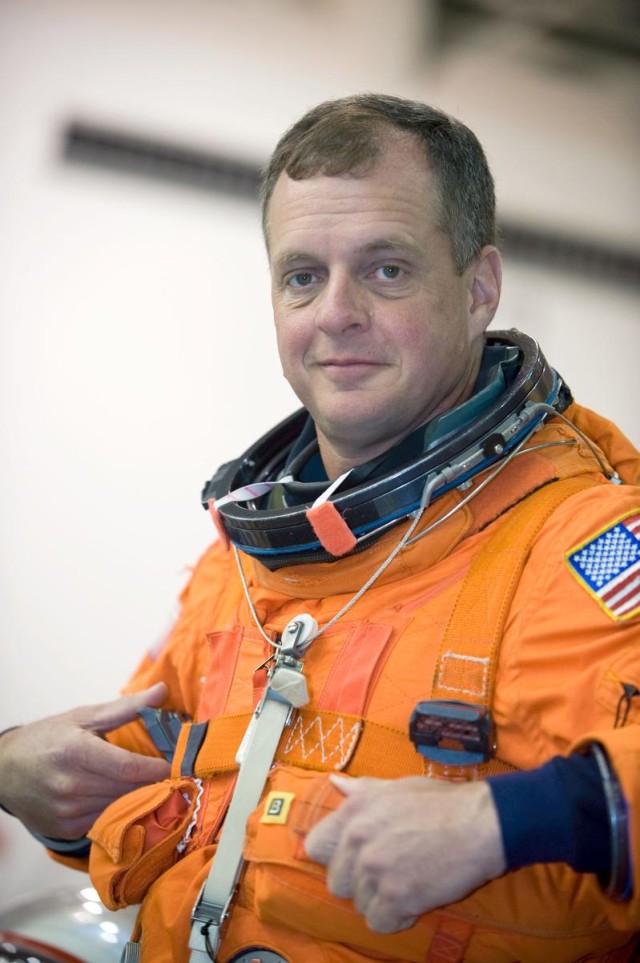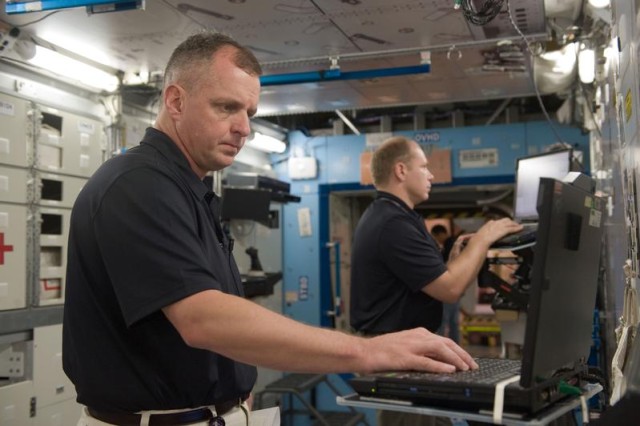Army Astronaut Col. Timothy J. (T.J.) Creamer will be heading to the International Space Station as part of Expedition 22 via the Russian Soyuz TMA-17 on Sunday, 20 Dec. The Soyuz will dock to the station on 22 Dec. The three-man crew of this flight includes Creamer, a Russian cosmonaut and a Japan Aerospace Exploration Agency astronaut. They will join two other astronauts currently onboard the ISS. NASA Astronaut Jeff Williams (retired Army Colonel) is already there as the mission commander.
Creamer will serve as a flight engineer on this trip, which is his first spaceflight. Creamer, who is from Upper Marlboro, Maryland, has supported eight previous shuttle missions.
Creamer graduated from Loyola College with a Bachelor of Science degree in chemistry and entered the U.S. Army Aviation School in December 1982. He was designated as an Army Aviator in August 1983, graduating as the Distinguished Graduate from his class. He was subsequently assigned to the 1st Armored Division as a section leader, platoon leader, flight operations officer, and as a personnel staff officer for the 501st Attack Helicopter Battalion. In 1987, he was assigned to the 82nd Airborne Division as a commander of an air cavalry troop in the 17th Cavalry, and later as the personnel officer of the 82nd Aviation Brigade.
Following this assignment, he completed a Master of Science degree in physics at MIT in 1992, and was subsequently assigned to the Department of Physics at the United States Military Academy as an Assistant Professor. Other military schools include Army Parachutist Course, Army Jumpmaster Course, the Combined Arms Services Staff School, and the Command and General Staff College. Prior to his astronaut selection in 1998, he had been working as a Space Operations Officer, with the Army Space Command, stationed in Houston, Texas. He is now the Army's NASA Detachment commander.
The Expedition 22 crew will continue to work on the evolution of the ISS from orbiting outpost to multidisciplinary laboratory, activating recently delivered research facilities, integrating new supply lines and enhancing living conditions. They will be instrumental in setting up and activating new research facilities, such as the Fluids Integrated Rack and Materials Science Research Rack 1. They'll also activate the new Combined Operational Load-Bearing External Resistance Treadmill (COLBERT); unberth the Japanese H-II Transfer Vehicle when its supply mission is complete; and welcome a new Russian docking module, two shuttle crews and a Progress resupply ship.
The crew will remain at the ISS for approximately six months, returning in May 2010.




Social Sharing